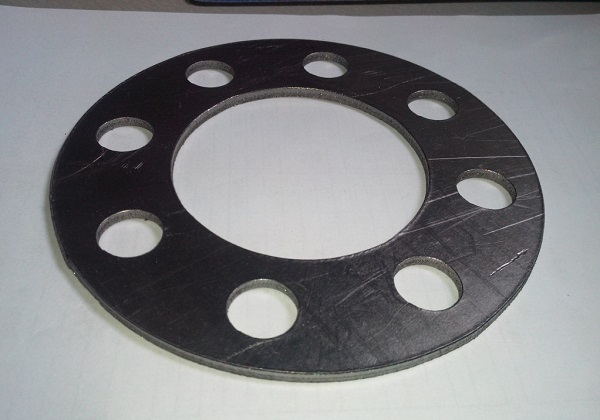Gasket
A gasket can be used for many different purposes, but generally, it serves as a flexible seal that fills the space between two components joined under compression, preventing leakage through the gap between it. For example, when laying a pipeline, a gasket is used to create a seal between adjoining pieces of pipe, preventing liquids or gases leaking out from the pipeline, or from penetrating into the pipeline.
Gaskets can also be used for, or contribute to:
- Sound and noise reduction.
- Vibration reduction.
- Packaging seals.
- Hygiene control.
- Supports and mountings.
- Glazing and cladding.
The durability and safe operation of a gasket can be significantly enhanced by selecting the right material, taking into account the application and the environmental features it will be exposed to. Many different materials can be used to make gaskets. The key property is generally that they are capable of yielding to such a degree that they can tightly fill the required space. Flexible materials such as rubber, paper or cork are often used. Metal can also be used, to make spiral wound or copper head gaskets.
The material used, and its characteristics, will determine the properties of the gasket, which might include; resistance to chemicals, resistance to extreme temperatures, resistance to pressure, and so on.
In pressurised systems, a gasket may also act as a safety device. The gasket is typically the weakest component of the system and will fail before a more potentially dangerous or costly response such as a pipe bursting or an explosion.
A gasket should allow the sealing surfaces to be separated and reassembled, allowing for essential maintenance to take place.
[edit] Find out more
[edit] Related articles on Designing Buildings Wiki
Featured articles and news
Infrastructure that connect the physical and digital domains.
Harnessing robotics and AI in challenging environments
The key to nuclear decommissioning and fusion engineering.
BSRIA announces Lisa Ashworth as new CEO
Tasked with furthering BSRIA’s impressive growth ambitions.
Public buildings get half a million energy efficiency boost
£557 million to switch to cleaner heating and save on energy.
CIOB launches pre-election manifesto
Outlining potential future policies for the next government.
Grenfell Tower Inquiry announcement
Phase 2 hearings come to a close and the final report due in September.
Progress from Parts L, F and O: A whitepaper, one year on.
A replicated study to understand the opinion of practitioners.
ECA announces new president 2024
Electrical engineer and business leader Stuart Smith.
A distinct type of countryside that should be celebrated.
Should Part O be extended to existing buildings?
EAC brands heatwave adaptation a missed opportunity.
Definition of Statutory in workplace and facilities management
Established by IWFM, BESA, CIBSE and BSRIA.
Tackling the transition from traditional heating systems
59% lack the necessary information and confidence to switch.
The general election and the construction industry
As PM, Rishi Sunak announces July 4 date for an election.
Eco apprenticeships continue help grow green workforce
A year after being recognised at the King's coronation.
Permitted development rights for agricultural buildings
The changes coming into effect as of May 21, 2024.






















